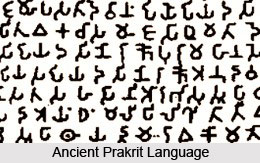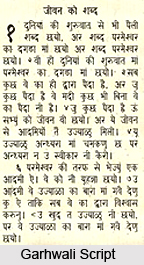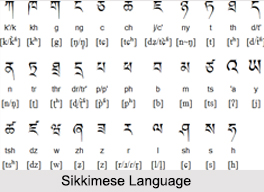 Origin of Prakrit is abounding in mystery as there are varied views among the Historians. The grammarians and writers consider the term that denotes a number of definitely artificial literary dialects. It is habitual to use the term to Indian vernaculars that existed before the period when the modern vernaculars became permanent. Sir George Grierson classifies Prakrit into three great stages: Primary Prakrit - the Vedic language and its successor Sanskrit are literary forms; Secondary Prakrit - Pali literature and the Apabhrancas of the grammarians; and Tertiary Prakrit - the modern vernaculars.
Origin of Prakrit is abounding in mystery as there are varied views among the Historians. The grammarians and writers consider the term that denotes a number of definitely artificial literary dialects. It is habitual to use the term to Indian vernaculars that existed before the period when the modern vernaculars became permanent. Sir George Grierson classifies Prakrit into three great stages: Primary Prakrit - the Vedic language and its successor Sanskrit are literary forms; Secondary Prakrit - Pali literature and the Apabhrancas of the grammarians; and Tertiary Prakrit - the modern vernaculars.
The existence of the Prakrit language is derived from the inscriptions of Ashoka. There are three dialects that can be deduced from here and they are that of the east, used in the capital, that of the north-west and that of the west. Among these the north-west preserves the most ancient aspect as it maintains the element of the r vowel and r in consonantal groups. The western dialect has `a` for r the eastern dialect has i or u for f us well as a.
To the group of old Prakrit belong the mysterious Paicaci, in which the famous Brihatkatha of Gunadhya was written. The Old Prakrit is simple. It include the loss of the vowels r and i, diphthongs ai and a; reduction in the number of sibilants and nasals; and the integration of consonants. It also shows the operation of the substitution of the expiratory for the musical accent. Each syllable is reduced to the form either of a short or long vowel. A short vowel followed by one or two consonants, a long vowel followed by a single consonant.
Prakrit language, had in its early metamorphosis and evolution, assumed five principal forms, comprising: Maharastri, Shauraseni, Magadhi, Ardhamagadhi and Paishachi. Amongst this cluster, Maharastri is looked at as the most important. Originally acknowledged as Daksinatya, it became well admired as Maharastri, as it quintessentially represented the language of Maharashtra. The use of this language can be witnessed in Hal`s Gahasattasai, Bakpatiraj`s Gaudabaho and in the dialogue and songs of low-classed characters in Sanskrit plays. Some basic individualities of Maharastri Prakrit comprise the loss of consonants and the transposition of the letter h for the s of Sanskrit. Shauraseni comes next in line of importance, concerning varieties in Prakrit language. Sauraseni made its presence felt in the whole of Mathura, being named after Shursen, the king of Mathura. Its principal characteristics include the replacement of d and th for Sanskrit t, and dh for Sanskrit h. Ordinary women and uninformed men generally verse in this language in Sanskrit plays. Magadhi Prakrit delineated the language of the eastern half of the Gangetic valley. The utilisation of this language can be noticed in the dialogue delivery of subaltern characters in Sanskrit plays. Magadhi Prakrit`s oldest form is witnessed in Ashvaghosh`s plays, Kalidasa`s Abhijnanashakuntalam and Shudraka`s Mrchchhakatikam. Some distinguishing features of this language comprise the use of a single sh, the replacement of l for r, y for j, d/d for t and the loss of middle consonants. Bangla and other contemporary eastern Indian languages actually owe their evolution to Magadhi Prakrit.
The use of Ardhamagadhi is often presently conceived to be the classic form of Prakrit, whereas others are considered sequestered versions. For this precise reason, courses imparting "Prakrit" often teach Ardhamagadhi.
A secular literature was composed in Old Prakrit till the second century A. D. Thereafter there have been fundamental changes which mark the Middle Prakrit of the grammarians. It includes softening or disappearance of intervocalic consonants in the dominions of the Satavahanas of the south-west and by the grammarians of Magadhi, and Qaurasena. After the language being stereotyped by the grammarians, the Prakrit rapidly lost its importance as they became detached from current speech. They lacked the traditional sanctity, structure and beauty of form of Sanskrit.



















